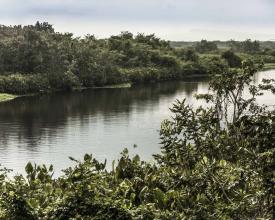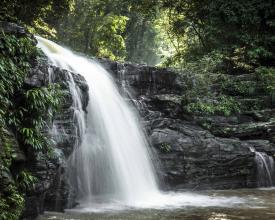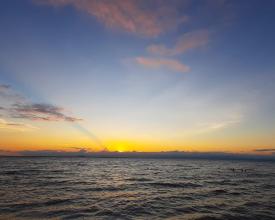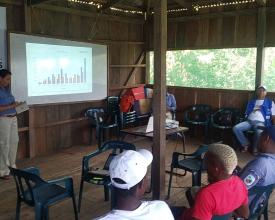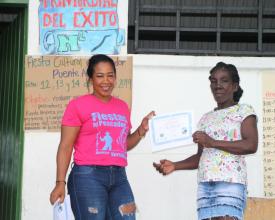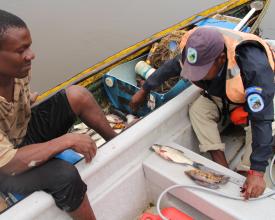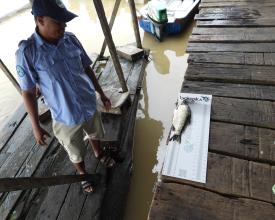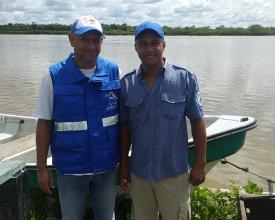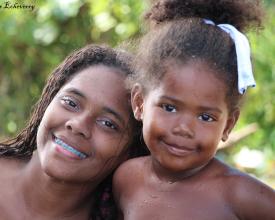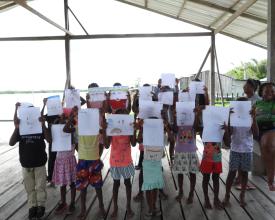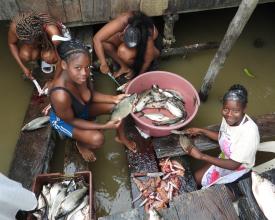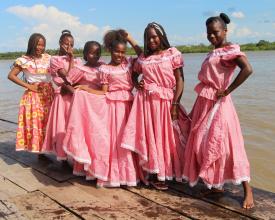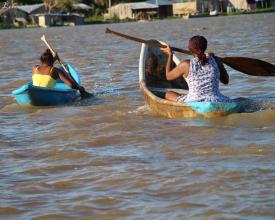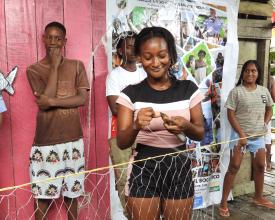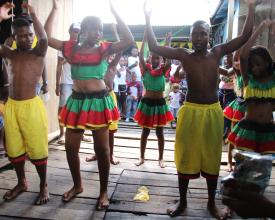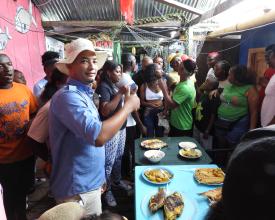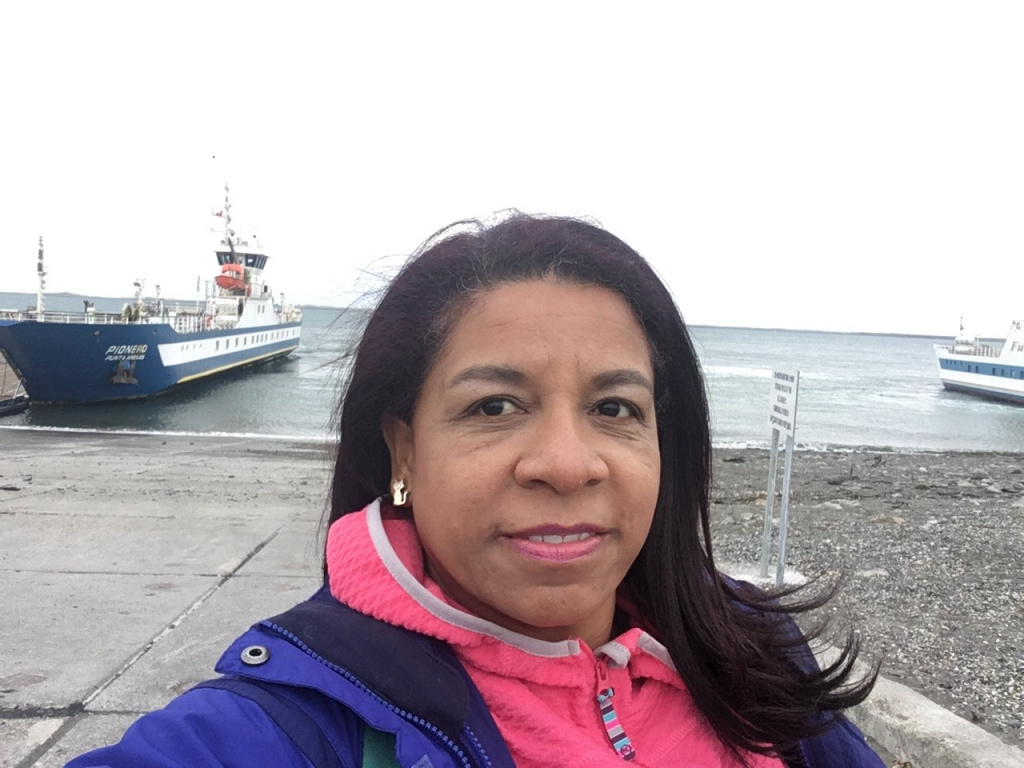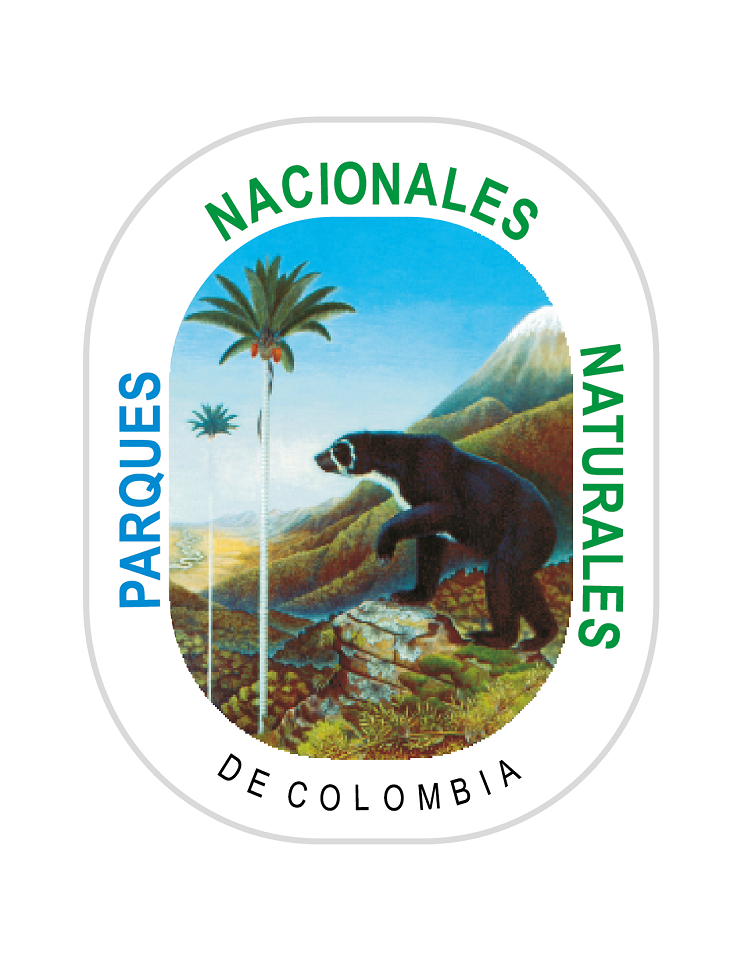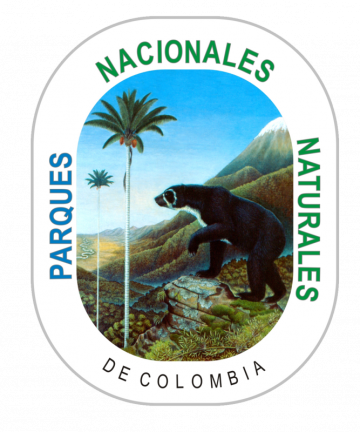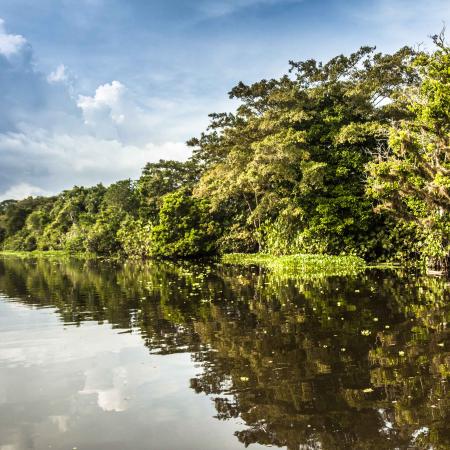
From Monitoring to Festival! An agreement on the use and management of hydrobiological resources and fishing in Los Katíos National Park with 10 years of history.
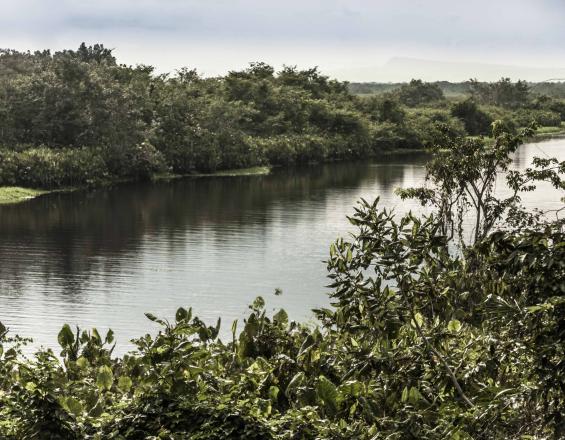
The Specific Agreement for the Use and Management of Hydrobiological Resources and Fishing Activities in the Tumaradó marshes signed between the PNN Los Katíos and the Tumaradó Minor Community Council in April 2012 completed its first 10 years. It has not been an easy task, however, the results are evident, highlighting the participation of women, youth and children. This work carried out hand in hand between Los Katíos NP and its main stakeholders has been successful, demonstrating once again that when communities are involved in the conservation exercise, agreements are made, identity and appropriation are generated, the result is the appropriate use of their resources. If anything characterizes the people of the Pacific, it is their joy, and of course the Tumaradoseños demonstrate this every year with the Bocachico Festival, a traditional celebration whose objective is to integrate the communities around the conservation of the territory, the rescue of their culture and tradition, and the strengthening of their governance.
Context
Challenges addressed
Social
To join inter-institutional efforts to guarantee food security.
-Avoid resource depletion by fishermen from other areas who are unaware of the agreement.
-Raising awareness and positioning of the use agreement among fishermen from nearby communities.
-Continue the relationship, management of the differential approach and joint decision making between the park and Tumaradó.
-Strengthen and regionally position the actors that are part of the agreement.
Environmental
-Strengthen implemented conservation strategies
-Reach a use agreement with the Puerto Plata community.
Economic
-Generate economic alternatives to fishing.
-Implementing good fishing practices to obtain greater profits in the commercialization of the product.
-Consolidation of an organizational structure for the management and execution of projects.
-Financial support to implement activities that strengthen the agreement.
Location
Process
Summary of the process
The success of the agreement between the protected area and the Tumaradó community is due to the good relationship that has been maintained over time, which is undoubtedly an achievement derived from the compliance between both parties, the years of joint work that have allowed the closeness and strengthening of bonds of trust and, of course, the respect and appreciation for the cultural and traditional elements of the region around fishing, the inclusion of women and intergenerational work, as well as the inclusion of black and indigenous communities and competent entities in the park's coordination and planning processes. and traditional fishing elements of the region, the inclusion of women and intergenerational work, as well as the inclusion of black and indigenous communities and competent entities in the park's coordination and planning process.
Building Blocks
Building trust: The basis of the agreement
The Specific Agreement for the Use and Management of hydrobiological resources and fishing activities in the Tumaradó marshes signed between Los Katíos NP and the Tumaradó Minor Community Council on April 24, 2012, is derived from a previous agreement (called Agreement 001) between the Park and the communities of the lower Atrato, which decided to conserve and make good use of hydrobiological resources.
Both agreements arise as part of the results of an international cooperation project whose products corresponded to the signing of 2 agreements framed in the conservation with different communities; one of them was with the indigenous community of Juín Phubuur, which was an agreement of wills and the other was the agreement for the use and management of Tumaradó.
Thanks to PNNC's compliance, constant communication and work with the communities, as well as the benefits received in terms of new experiences, knowledge and opportunities, the community had the necessary confidence to reach an agreement that has been maintained for the last 10 years.
.
Enabling factors
-Trust between the signing parties (PNN Los Katíos and Tumaradó Community) and compliance with the provisions of the agreement.
-Constant socialization of the agreement, in order to reinforce its knowledge and make it known to future generations.
-Practicality and adjustment to new contexts, understanding the changes in the environment and social context.
Lesson learned
-When good conservation management is carried out, communities are willing to participate actively and permanently.
-With the approach of knowledge integration, it is possible to establish more practical and beneficial rules of the game for the parties involved.
The Agreement
The agreement for the use and management of hydrobiological resources and fishing activity in the Tumaradó marshes is an effort between the PNN Los Katíos (PNNLK) and the Tumaradó Community Council (CCT), formed in 2012, is coordinated by a local committee that is composed of 4 representatives, 2 from the CCT and 2 from the Park, and its purpose is to develop actions, competencies and responsibilities that promote conservation within the PA, mainly through fishing regulations that include the establishment of minimum catch sizes, permitted fishing gear and reserve zones.
Initially it was signed for 5 years, then the community stated that it should not have an expiration date; therefore, the agreement continues to be implemented.
Enabling factors
-The community of Tumaradó built the agreement jointly with the PA.
-It reflects local feelings and knowledge for the implementation of the measures.
-Results have been seen over the years with respect to the measures set forth in the agreement, benefiting not only the environment but also the community.
Established coordination bodies: follow-up committees.
-Analysis of the information obtained as a result of monitoring.
-Socialization of the information with the community for management decision making.
Lesson learned
-It is possible to conserve resources jointly between the community and PNN Los Katíos.
-Good relations and governance processes are maintained with the communities and the institution.
-Better biological and ecological knowledge of the fishery resources has been obtained.
Tumaradó and monitoring
Within the framework of the use and management agreement, the fishermen of the Tumaradó area provide information on the species caught, the type of gear used, the expenses incurred in the process, the weight and size of the species caught, the site of capture, the total and effective time per fishing operation, the state of sexual maturity, the state of each organism (whole, eviscerated), the type of boat and propulsion, as well as the number of fishermen, for 15 days a month; In addition, two follow-up visits to the agreements and two monthly monitoring visits to the fishing operations are carried out.These activities are carried out in order to know the status of the fishery resource and thus be able to make decisions on its management.
Enabling factors
-Availability of fishermen to collect information related to monitoring.
-Ability and good relationship with the protected area's personnel to collect information.
-Adjust the necessary measures of the agreement, according to the results of fishery monitoring.
-Socialization of the fishery monitoring results in a timely manner
-Linking ethnic groups (Embera-Katíos) that live in the area to the conservation processes
-Information inputs for fisheries management processes in coordination with AUNAP.
Lesson learned
-Larger and heavier fish are caught within the permitted sizes and sold at a better price (added value due to good practices).
-The migration of the Tumaradó community to other places in search of economic alternatives is avoided.
Women and children
The participation of women, youth and children from Tumaradó in different activities related to fishery resource monitoring is clear and marked. Some women are in charge of handling and arranging the fish and are involved in commercialization and value-added activities such as cleaning and gutting the fish. Some women have been involved in monitoring because of their participation in fish cleaning activities. They also play a leading role in gastronomy, participate in meetings, workshops and environmental education activities, support the implementation and logistics of cultural events, and support their husbands and fathers in carrying out their activities.
Generally, there are two women from the community on the team, and others are involved in the different activities, for example, as collectors of fishing information and facilitators of the agreement: accompanying fishing operations to verify compliance with the provisions of the agreement.
For their part, the children support the landing of hydrobiological resources, in addition to accompanying their parents to throw the nets during fishing operations, and participate in workshops and different spaces for socialization of the monitoring results, allowing the generation of knowledge and wisdom.
Enabling factors
-Effective inclusion of women and children from the Tumaradó community in the work related to the use agreement.
-Knowledge of the agreement and the use of the monitoring information in the community of Tumaradó, this is included in the educational institution, teachers-students.
Lesson learned
-Women are the ones selected to carry out the trade tasks because of their ability to manage finances, which is recognized by the fishermen themselves, who leave these functions in their hands.
-Some women and children accompany the fishing tasks, however, in the Tumaradó Community this role is more marked in the men.
-The roles are complementary, there is no competition, rather the aptitudes of each gender are recognized and used strategically.
-The agreement has allowed women to be more visible, making their roles in the community more dynamic.
The Bocachico Festival!
In order to make visible and recognize the performance of good fishing practices and compliance with the Use Agreement between the community of Tumaradó and PNN Los Katíos, the Bocachico Festival was created, which in 2023 completes its XVI version. This is a traditional celebration that takes place in the community to promote the proper use of hydrobiological resources, especially bocachico; it is also carried out as an education and communication strategy aimed at organizational strengthening and lines of culture and governance.
This two-day event includes a variety of activities and contests for the whole community around the hydrobiological resource, such as catching the biggest fish, gastronomic dishes, the person who eats the most bocachico, canoeing, swimming, painting, trovas, weaving the net, fixing the fish, interviews with fishermen, among others. In 2020, diplomas were awarded to artisanal fishermen to honor their good work within the framework of the agreement.
Enabling factors
-Good relationship between the community of Tumaradó and PNNC through the inclusion of cultural practices in the festival, which are important for the community.
-Valuation of fishing as a cultural activity.
-Compliance with actions related to this aspect within the framework of the agreement.
Lesson learned
The cultural component can be strengthened through activities and the development of spaces such as the Bocachico Festival, thus benefiting the protected area by complying with the agreement regarding the measures implemented around fishing and the traditions of the local communities.
Impacts
The Use Agreement has allowed:
- Jointly strengthen between the Park and the community of Tumaradó, aspects within the framework of the lines of Culture, Governance, Management and Territory.
- Appropriation and commitment to the regulations by approximately 70 families.
- Generate information about the fish species present in the area and some ecological aspects; catch sizes have been defined and the state of the fishing resource is known.
- Implement good fishing practices in the Tumaradó community that include the proper use of nets, taking into account the specifications of the permitted mesh size (3.5 cm) and fish size control.
- Ensure that the resource in use reaches maturity and that it remains in continuous use even during the reproductive season.
- Empower and strengthen the community of Tumaradó in the conservation of water bodies and their fish species, especially those in danger of extinction.
Beneficiaries
Approximately 70 families from the community of Tumaradó, where there are about 100 fishermen.
Sustainable Development Goals
Story

Los Katíos National Park, named after the Embera Katíos indigenous people who inhabit the territory, is located in northwestern Colombia on the border with Panama, in the jurisdiction of the municipalities of Riosucio and Unguía in the department of Chocó, and the municipality of Turbo in Antioquia. Its 77,968.26 hectares are part of the Darién Gap, enclosing an unparalleled beauty, with its rich water resources being one of its main characteristics. The protected area was declared in 1973 and nominated a World Natural Heritage Site by UNESCO in 1994 due to its importance in the exchange of fauna and flora between Central and South America. Described by its people as a paradise of biodiversity, characterized not only by its high richness of animals and plants, but also of communities, indigenous and Afro-Colombian peoples, and it is precisely one of these, the protagonist of this story: Tumaradó, a collective territory with an area of 107,064 ha.
An area recognized for its great wealth, but also with its conflicts associated with the fishing resource, that is why in order to join efforts to ensure the sustainability of the hydrobiological resource and generate governance over these spaces, have best practices and management is that a community agreement is created, which has been the cornerstone of all the management that is done in the Park.
The monitoring of the hydrobiological resource that is carried out within the framework of the Agreement for Use and Management of hydrobiological resources and fishing activities in the Tumaradó marshes signed between the Park and the Community Council, has brought rewards and unforgettable moments for those who have been participating, which include the fortune of sighting species such as the manatee, amusing anecdotes that today are remembered with thanks, among falls into the water, centipede eagles and pelicans chasing the fishermen during a fishing trip to obtain prey easily, and a number of deep conversations that have allowed the creation of bonds of friendship and affection. A presentation of results projected on a big screen, where the people of Tumaradó saw themselves there, in photos and videos of their fishing experiences, have been among other moments of enjoyment for this town that through these activities regains hope, leaving much learning for the PA team, motivation to continue exchanging and working with the communities.

